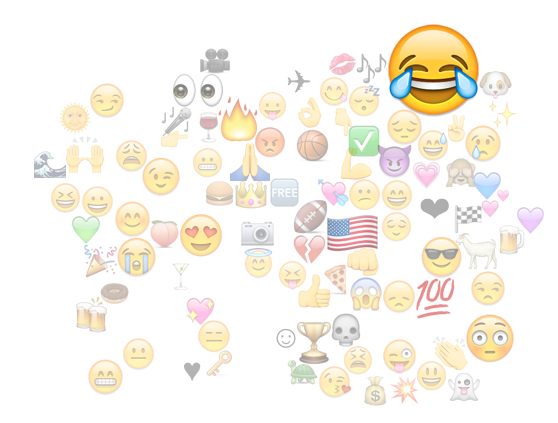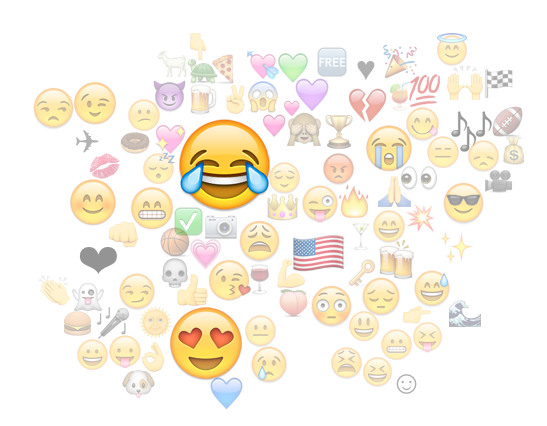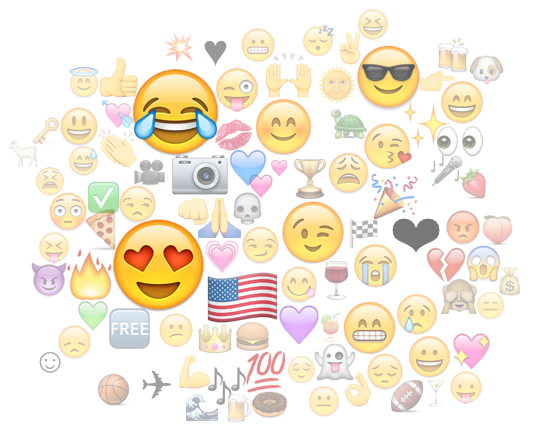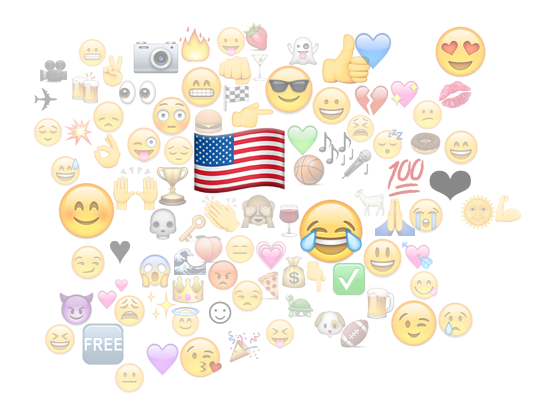Emoji-Marketing is one of the hottest trends for brands and marketers right now 🔥.
Yes, the small cartoon icons which have often been thought of as a passing millennial trend, are here to stay and extend far beyond millennial usage. In fact, emojis are the fastest growing digital language. In 2015 the Oxford Dictionary chose an emoji as the word of the year. Let me clarify, they did not choose the word “emoji”… they chose this 😂 as the word of the year. Think of emojis as modern-day hieroglyphics used to express our emotions. Emojis are changing how we communicate with one another in the digital space and marketers need to get onboard 🚂..
Don’t believe me? Check out these emoji stats:
- According to PR week, four in five 18-65 year olds use emojis on a regular basis.
- People send over 6 billion emoji’s a day, says Swyft Media.
- In a New York Times article, it was shared that big brands such as Coca-Cola, Spotify, Starbucks, and Disney (to name a few) have each paid Twitter over $1 million for custom emoji designs for their ads.
- Oh yeah, there is now officially a World Emoji Day on July 17 📅
And most recently, Twitter introduced its very own emoji-based targeting 🎯. Like AdAge explained, Twitter emoji-based targeting is “exactly what you think it is.” The article goes on to provide an example that if someone in Chicago tweets a pizza emoji 🍕, they could then be targeted with ads by a local pizza restaurant.
Understanding How Your Audience Uses Emojis
But like every new channel, fad, or form of communication, brands and marketers will need to understand how their audience is using emojis and what they prefer. Does your audience love the 😎 or does the 😅 resonate instead? Or perhaps, emojis don’t resonate or fit with your target audience at all.
As shared by Lisa Lacey in a Search Engine Journal article, “The takeaway here is a rather obvious one: Brands and marketers have to stay on top of what their audiences prefer and communicate with them accordingly.”
At Affinio, the marketing intelligence platform, we analyze the social connections that exist within an online audience and then segment the audience into naturally-occurring interest-based communities (clusters). From there we are able to identify the interests, content, hashtags, and ultimately what is most important to an audience in order to drive relevant business and marketing strategies. As part of that analysis, we are even able to identify the emojis that resonate most within each interest-based community.
For brands and marketers looking to incorporate emojis into their communications strategy, understanding what emojis are resonating and being used by their ideal audience is crucial.
Let’s take a quick look:
As an example I analyzed an American beer brand on Twitter and looked at the different interest-based communities that were formed. (Read about Affinio’s segmentation and approach here).
Here’s a couple of the interest-based communities I found and their top shared emojis:
Top emojis for Sports Dads:
Look closely, you’ll see a football, basketball, trophy, and checkered flag emoji!
Top emojis for Country Fans:
I spy a couple of microphones and music notes!
Top emojis for Coupon Moms:
Is it any surprise the “FREE” emoji appears? Now that’s a deal!
Top emojis for American Conservatives:
One emoji really stands out here!
Is it any question that 😂 was chosen as the word of the year?! It seems to be a fan favourite across all communities.
As can be seen, there are differences between each of the interest-based communities and their emoji usage that marketers and brands can leverage to drive their own emoji strategy.
How Affinio Can Help Marketers Understand Emojis:
Affinio gives you the unique ability to understand in-depth cultural insights of your ideal audience. These advanced insights allow you to take an audience-first approach to make relevant marketing and business decisions. But for the emoji-lovers out there, you can use Affinio to:
- Understand what emojis are being shared by your ideal audience
- Monitor and track the changes in content and emoji usage
Originally posted on the Affinio blog, “Emoji-Marketing: Understanding How Your Audience Uses Emoji“




